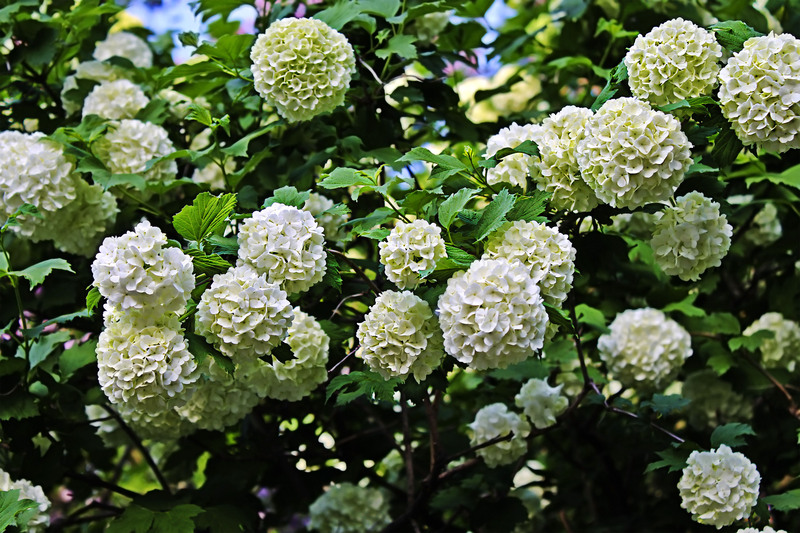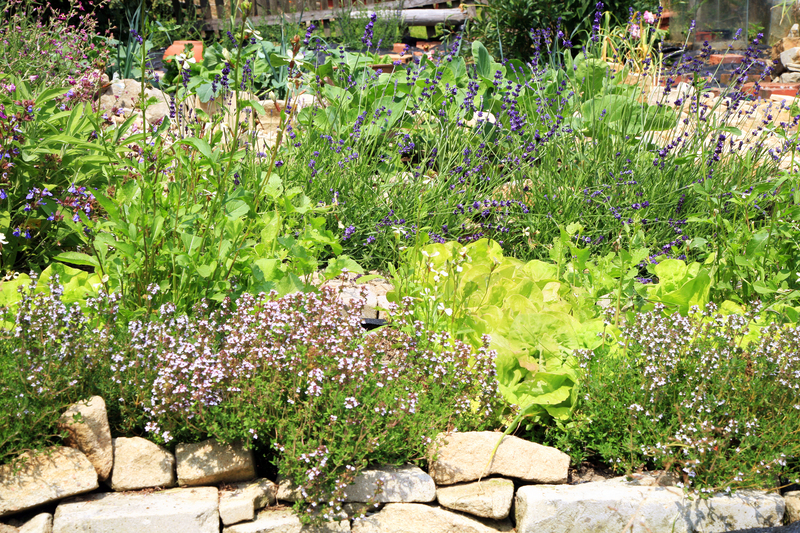3 Pro-Level Tips to Keep Pesky Weeds at Bay
Posted on 29/06/2025
3 Pro-Level Tips to Keep Pesky Weeds at Bay
Weeds are the unwelcome guests in every garden, lawn, and landscape bed. Their pesky presence can quickly spoil the beauty of your yard while stealing essential nutrients, water, and sunlight from your precious plants. If you're tired of constantly fighting an uphill battle, it's time to upgrade your game. Here, we share three pro-level weed control strategies to keep those annoying invaders at bay for good.
Why You Need to Outsmart Pesky Weeds
Persistent weeds not only diminish your garden's appeal but can also unleash a host of problems:
- Choke out prized plants and ornamental flowers
- Compete with your lawn for nutrients and water
- Serve as habitats for pests and diseases
- Lower property value and create extra yard work
To truly keep pesky weeds in check, you need more than just pulling them by hand. Professional landscapers and seasoned gardeners know a few well-guarded secrets for lasting weed prevention. Let's dive into their top three tactics, from strategic pre-planting to cutting-edge maintenance tips.

Tip 1: Master Pre-Emergent Weed Control
What Is Pre-Emergent Weed Control?
Pre-emergent weed control is a pro-level technique that stops weeds before they even sprout. Unlike standard herbicides you might spray after spotting weeds, pre-emergents create a barrier in the soil and prevent weed seeds from germinating.
How Does It Work?
Pre-emergent products form a thin chemical layer within the top inch of soil. When weed seeds begin to germinate and send up a sprout, they encounter this barrier and die before breaking through the surface. This method is extraordinarily effective against annual weeds like:
- Crabgrass
- Goosegrass
- Foxtail
- Lamb's quarters
- Pigweed
When and How to Apply Pre-Emergents
Timing is crucial! Apply pre-emergent weed control in early spring, just as soil temperatures reach about 55?F (12?C) for a few days in a row. That's when most annual weed seeds start to wake up.
- Water in lightly after application to activate the barrier
- Do not disturb the soil after applying, as it breaks the barrier
- Repeat in late summer or early fall to catch winter annual weeds
Pro Tip: Always check the label for instructions and ensure the chosen product is safe for your lawn and flower beds. Look for reputable brands such as Preen or Scotts for trusted weed prevention.
Tip 2: Make Mulch Work Double Duty
Why Mulch Is a Weed's Worst Enemy
More than just a pretty finishing touch, mulch is a powerful weapon against stubborn weeds. A thick layer of quality mulch blocks sunlight, denying weed seeds the light they need to sprout. At the same time, mulch benefits your plants by regulating soil temperature, retaining moisture, and improving soil structure.
- Suppresses weed growth year-round
- Encourages beneficial earthworms in garden soil
- Prevents erosion and soil compaction
- Adds organic matter as it breaks down, improving your garden ecosystem
How to Properly Mulch for Maximum Weed Control
The key is to use enough mulch and to apply it correctly:
- Apply 2-4 inches of organic mulch such as shredded bark, wood chips, or compost
- Ensure mulch is evenly spread and not piled against plant stems or tree trunks
- Top up areas where mulch thins to maintain weed coverage
- For extra security, place a biodegradable weed barrier fabric underneath mulch in garden beds
Mulch Types: What's Best for Weed Prevention?
- Shredded bark or hardwood chips - Long-lasting and attractive
- Pine straw or needles - Great for acid-loving plants and lightweight
- Compost or leaf mold - Enriches soil but may break down quickly
- Gravel or stone mulches - Perfect for xeriscapes or areas with persistent weeds
Pro insight: Regularly fluff and top off mulch, especially after heavy rains. Fresh mulch makes it difficult for sunlight to reach weed seeds and keeps your landscape looking sharp season after season.
Tip 3: Upgrade Your Lawn & Garden Maintenance
Keep Lawns Thick, Healthy, and Weed-Resistant
A dense, healthy lawn is the best natural weed barrier. Weeds thrive in thin, patchy, or stressed turf. Here's how the pros keep their lawns so lush that weeds don't have a chance:
- Mow high (3-4 inches for most grasses) to shade out emerging weed seedlings
- Fertilize appropriately--use slow-release formulas in spring and fall
- Overseed thin areas every autumn to keep grass dense
- Avoid scalping or cutting off more than 1/3 of the grass's height at a time
- Water deeply but infrequently to promote strong root systems
Expert tip: Crowded grass blades make it nearly impossible for weeds to get established. If your lawn is patchy, aerate and overseed. Consider using regionally-adapted grass varieties for maximum coverage and minimal weed invasion.
Smart Gardening Practices for Flower & Veggie Beds
Weeds tend to invade poor or neglected garden soil. You can keep unwanted plants out of your flower or vegetable beds by:
- Regularly pulling small weeds before they set seed
- Rotating crops to disrupt weed growth cycles in veggie gardens
- Installing drip irrigation to keep water where you want it (roots!), not on bare soil where weeds will thrive
- Edging beds with stone, metal or deep trenches to block creeping invaders like crabgrass, nutsedge, and grass runners
- Using weed-suppressing groundcovers such as creeping thyme, vinca, or ajuga in perennial beds
Technology & Tools: Think Like a Pro
The right tools make weed control faster and more effective:
- Long-handled loop hoes cut weeds at the root without disturbing surrounding soil
- Flame weeders are great for driveways and stone paths
- Battery-powered string trimmers offer precision around edging and tight spots
- Upgrade to a garden kneeler or rolling seat for less fatigue during manual weeding sessions
Investing in smarter tools and techniques saves time--and your back. For especially stubborn areas, pros recommend spot-treating with organic, non-selective herbicides like vinegar-based sprays or using a weed torch for hardscape cracks.
Bonus: Stop Weeds Before They Start
Beyond these pro-level weed control tips, there are several smart habits you can adopt to prevent invasive weeds from finding a home in your yard:
- Inspect new plants and soil for weed seeds or roots before introducing them to your garden
- Clean your mower and garden tools between areas to avoid spreading weed seeds
- Remove weeds before they flower and go to seed--one dandelion can produce thousands of seeds!
- Consider using landscape fabric in pathways and under patios to block perennial weeds
Eco-Friendly & Sustainable Approaches
Minimize Chemicals for Safe, Family-Friendly Landscapes
While some tough situations call for herbicides, you don't need to rely solely on chemicals to maintain a weed-free yard. Many pros and organic gardeners use strategies such as:
- Cover crops--plants like clover and rye grass that outcompete weeds in dormant beds
- Corn gluten meal--an organic pre-emergent suitable for lawns and flower beds
- Thick layers of leaf mold, straw, or compost for natural mulch
- Hand-pulling with ergonomic weeding tools
- Solarization--using sheets of clear plastic to heat soil and kill weed seeds between planting cycles
Reducing weed pressure through natural means not only protects beneficial insects and soil microbes but makes your landscape safer for children and pets.

Frequently Asked Questions about Keeping Pesky Weeds Away
How often should I use pre-emergent weed control?
Apply pre-emergent weed treatments twice a year: once in early spring and again at the end of summer to tackle different weed types. Reapply after heavy rain or when the barrier becomes disturbed.
What's the best homemade mulch for weed prevention?
Compost, shredded autumn leaves, or untreated grass clippings make excellent organic mulches. Apply them in a 2-4 inch layer for best results, and replace as needed through the growing season.
Is it possible to get rid of weeds permanently?
While it's impossible to eliminate weeds completely, consistent maintenance with these pro-level weed suppression strategies can dramatically minimize weed problems and keep your garden and lawn looking their best year after year.
Conclusion: Outsmart Pesky Weeds - The Pro Way
With the right combination of pre-emergent weed control, strategic mulching, disciplined lawn care, and smart prevention habits, you can effortlessly stop weeds from taking over. Implement these pro-level secrets in your landscape, and spend more time enjoying your healthy, thriving lawn and garden--and less time fighting off those relentless weeds.
Remember: Consistency is just as important as technique. Regular observation and early intervention are your strongest allies in weed prevention. Adopt these tips, and pesky weeds won't stand a chance!
Ready to cultivate gardens and lawns that make your neighbors green with envy? Start using these three pro-level tips today to keep those pesky weeds at bay, and enjoy a healthier, more beautiful landscape all season long.

